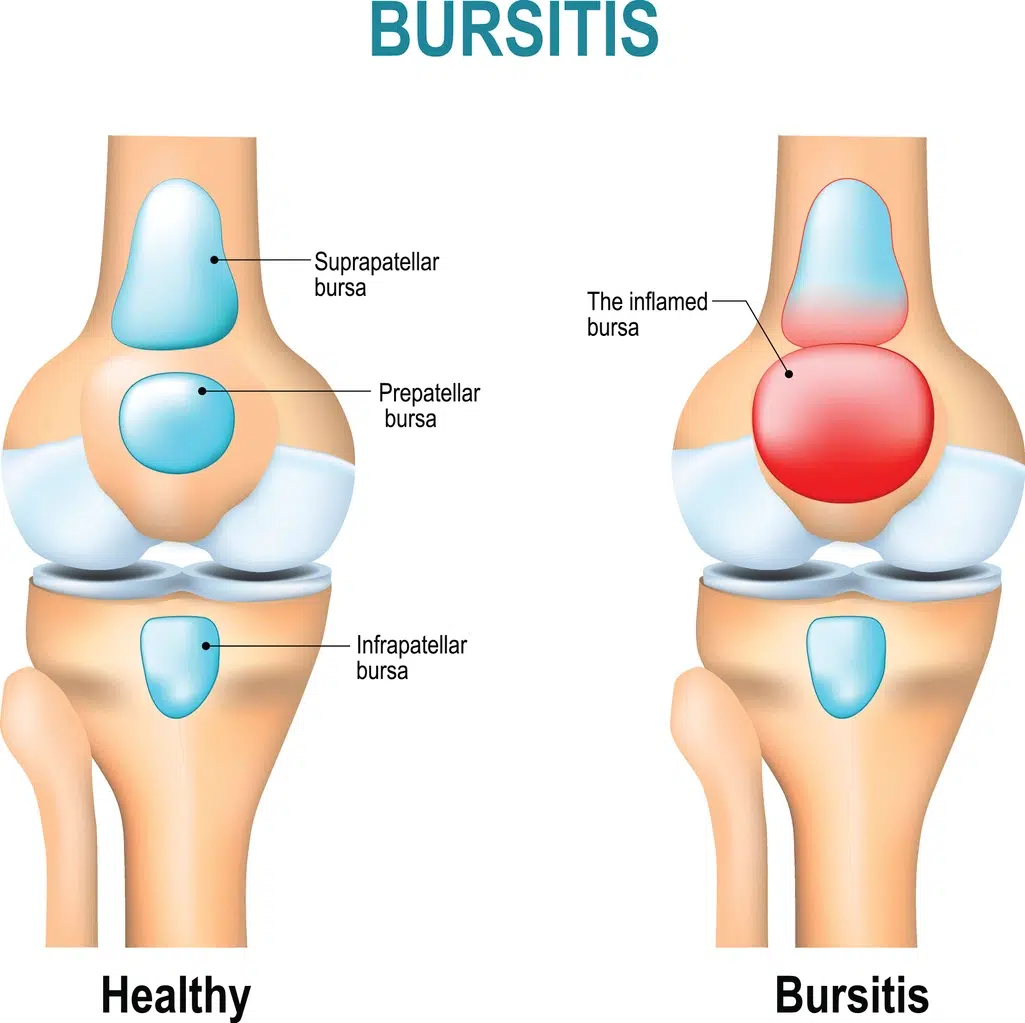Understanding Bursitis: Causes, Symptoms, and Treatment Options

Joint discomfort can be very frustrating, especially when it restricts your freedom of movement and interferes with your daily activities. If you’ve ever had unrelenting discomfort in your shoulder, hip, knee, or elbow, you may be suffering from bursitis, a typical yet relatively unrecognised cause of pain around the joints. We understand that bursitis can cause significant discomfort in your life, and that is why early treatment is crucial at Chase Lodge Hospital.
Inflammation of the tiny, fluid-filled sacs (bursae) that cushion your joints is known as bursitis. This can result from overuse, injury, or illness. Although bursitis is seldom serious, a lack of consideration can result in chronic pain and limited mobility. In this blog, we’ll discuss what causes bursitis, its symptoms, and the treatments that can be beneficial in helping you control and manage this annoying condition.
What is Bursitis?
Bursitis are small, fluid-filled sacs that serve as cushions for bones, tendons, and muscles, decreasing friction when these structures move. Inflammation of these sacs, most often from overuse, injury, or infection, results in bursitis.
It is crucial to differentiate between bursitis and similar conditions, such as arthritis (inflammation of the joint) or tendonitis (inflammation of the tendon). Although arthritis is a form of joint degeneration, bursitis deals with the bursae. But symptoms can also resemble one another, so professional diagnosis is important.
Types of Bursitis
Bursitis can affect any joint, but the most common are:
- Trochanteric Bursitis – An outer hip condition commonly affected in runners and people with bad postural habits.
- Subacromial Bursitis: Affects the shoulder and causes pain during lifting of the arm.
- Olecranon Bursitis – Occurs in the elbow, also referred to as “student’s elbow” because of extended leaning.
- Prepatellar Bursitis – Housemaid’s knee – It refers to the front of the knee due to its inflammation that results from regular kneeling.
Ischial bursitis in the buttock area and retrocalcaneal bursitis (pre-Achilles bursitis) close to the Achilles tendon are less frequent types.
Causes of Bursitis
Bursitis causes. There are several causes of bursitis, which include:
- Injuries or Trauma – A single jolt, repetitive pressure (e.g., kneeling, lifting).
- Overuse: Quite common in athletes, manual workers, or those with repetitive occupations.
- Medical Conditions – Risk is higher with such maladies as rheumatoid arthritis, gout, or diabetes.
- Infections – An infection with bacteria can lead to septic bursitis and will require antibiotics.
- Bad mechanics/posture – Lack of alignment, which then places increased stress on the bursae.
Common Symptoms of Bursitis
Knowing bursitis early will avoid the possibility of complications. Key symptoms include:
- Localised pain (sharp or dull, gets worse with movement).
- Inflammation and tenderness in the surrounding joint.
- Rigidity, decreased flexibility.
- Heat, redness (when there is infection).
When not treated gradually, it may worsen and cause chronic pain.
Diagnosis: How Bursitis Is Identified
Bursitis is diagnosed using several methods:
- Physical Exam: To assess for swelling, tenderness, and loss of motion.
- Imaging Studies – X-rays exclude fractures; MRI or ultrasound evaluates for soft tissue injury.
- Aspiration – When infection is suspected, fluid from the bursa is removed and sent to the lab for testing.
Treatment Options for Bursitis
1. Initial Self-Care
- Rest – Avoid activities that worsen pain.
- Ice Packs – Apply for 15-20 minutes to reduce swelling.
- Compression & Elevation – Helps with knee or elbow bursitis.
2. Medications
- NSAIDs (e.g., ibuprofen) to ease pain and inflammation.
- Antibiotics for septic bursitis.
3. Physical Therapy
- Stretching and strengthening exercises improve joint function.
4. Injections
- Corticosteroid injections provide rapid relief for severe inflammation.
5. Surgery (Rare Cases)
- Bursa drainage or removal may be needed for chronic bursitis.
Prevention and Lifestyle Tips
- Try to look after your posture to minimise the strain on the joints.
- Protect knees/elbows while at work or play.
- Engage in frequent breaks from monotonous work.
- Prevent overuse injuries by stretching before exercise.
- Do keep up a healthy weight to decrease joint stress.
When to See a Doctor
Contact a doctor if you have:
- Persistent pain despite rest.
- Symptoms of infection (such as fever, redness, or warmth).
- Difficulty moving the joint.
- Recurring bursitis episodes.
Final Thoughts
Bursitis is a treatable condition if addressed promptly. If self-help is not sufficient, our specialists at Chase Lodge Hospital can offer customised treatments to get your joints back in shape.
Need a Specialist? Schedule an Appointment today for professional service.
Read More: NHS factsheet on bursitis
Don’t allow joint pain to limit you; act in the early stage and make a difference!